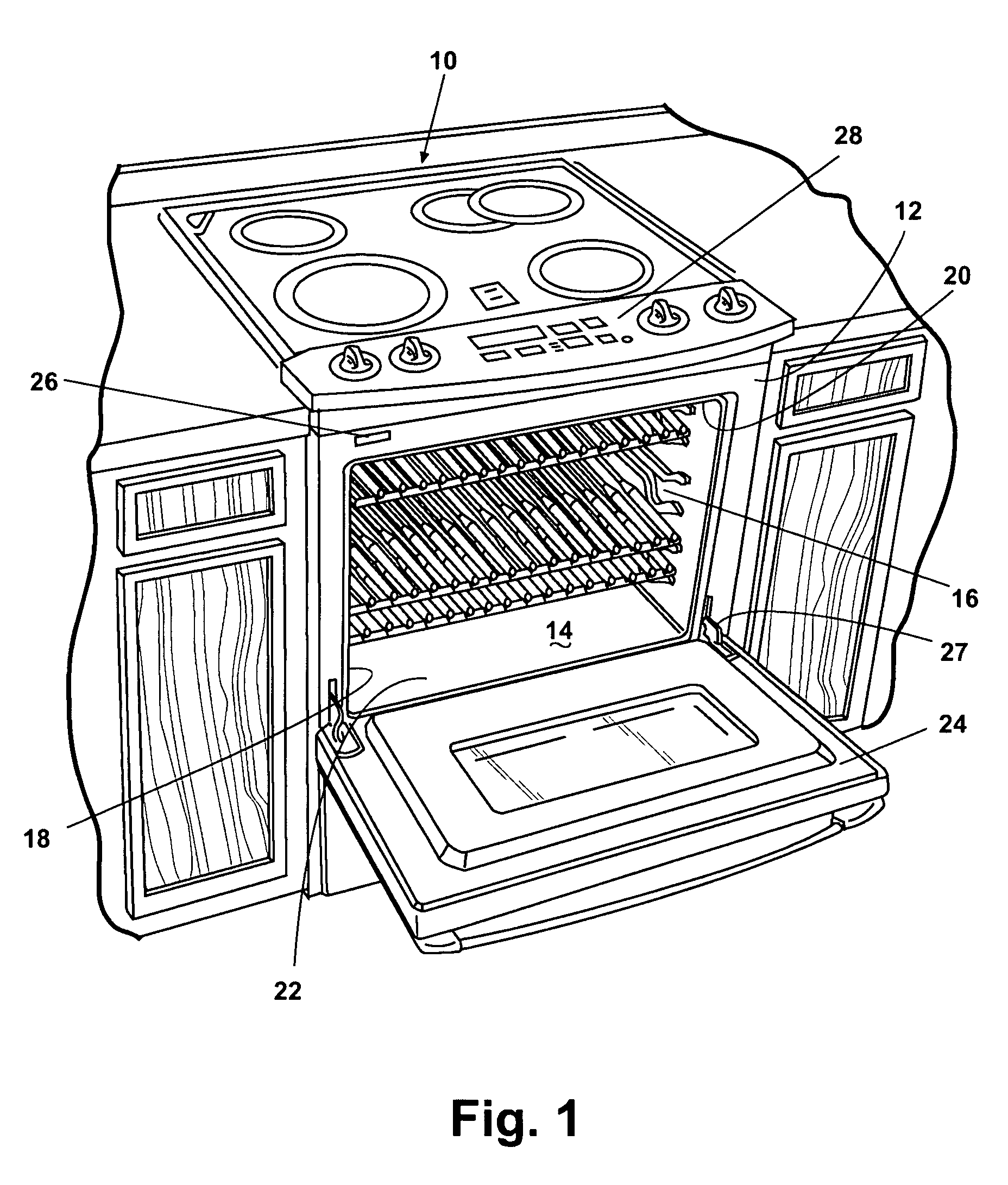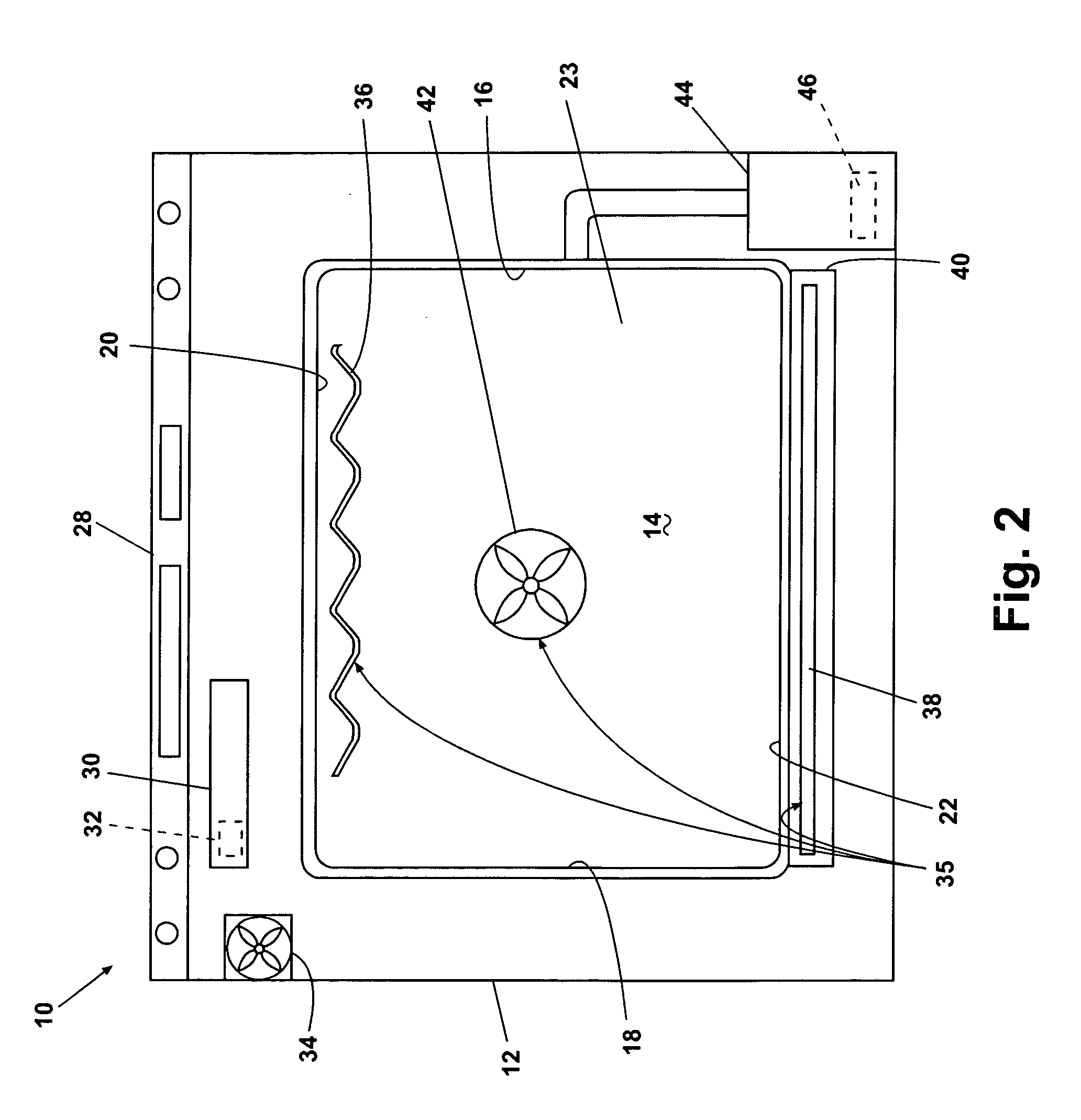Method for baking a dessert using steam
a technology of dessert and steam, which is applied in the field of baking a dessert, can solve the problems of not having a system for ovens found in most homes today, being relatively unpredictable and inconvenient, and not being able to regulate relative humidity
- Summary
- Abstract
- Description
- Claims
- Application Information
AI Technical Summary
Benefits of technology
Problems solved by technology
Method used
Image
Examples
Embodiment Construction
[0022]Referring now to the figures, FIG. 1 illustrates an exemplary automatic household oven 10 that can be used to implement a method for baking desserts with steam according to one embodiment of the invention. The oven 10 comprises a cabinet 12 with an open-face cooking cavity 14 defined by cooking cavity walls: a pair of spaced side walls 16, 18 joined by a top wall 20, a bottom wall 22, and a rear wall 23 (FIG. 2). A door 24 pivotable at a hinge 27 selectively closes the cavity 14, and a sensor 26 detects an open position of the door 24 and a closed position of the door 24. When the door 24 is in the open position, a user can access the cavity 14, while the door 24 in the closed position prevents access to the cavity 14 and seals the cavity 14 from the external environment.
[0023]The oven 10 further comprises a control panel 28 accessible to the user for inputting desired cooking parameters, such as temperature and time, of manual cooking programs or for selecting automated cooki...
PUM
 Login to View More
Login to View More Abstract
Description
Claims
Application Information
 Login to View More
Login to View More - R&D
- Intellectual Property
- Life Sciences
- Materials
- Tech Scout
- Unparalleled Data Quality
- Higher Quality Content
- 60% Fewer Hallucinations
Browse by: Latest US Patents, China's latest patents, Technical Efficacy Thesaurus, Application Domain, Technology Topic, Popular Technical Reports.
© 2025 PatSnap. All rights reserved.Legal|Privacy policy|Modern Slavery Act Transparency Statement|Sitemap|About US| Contact US: help@patsnap.com



